The appearance of small Eurasian beaver populations in parts of Italy has attracted the attention of the public and scientific community. After more than 500 years, the return of this keystone herbivore – and its positive impact on the landscape and its ecology – is highlighting the need for coexistence with a species relatively unknown in Italian society.
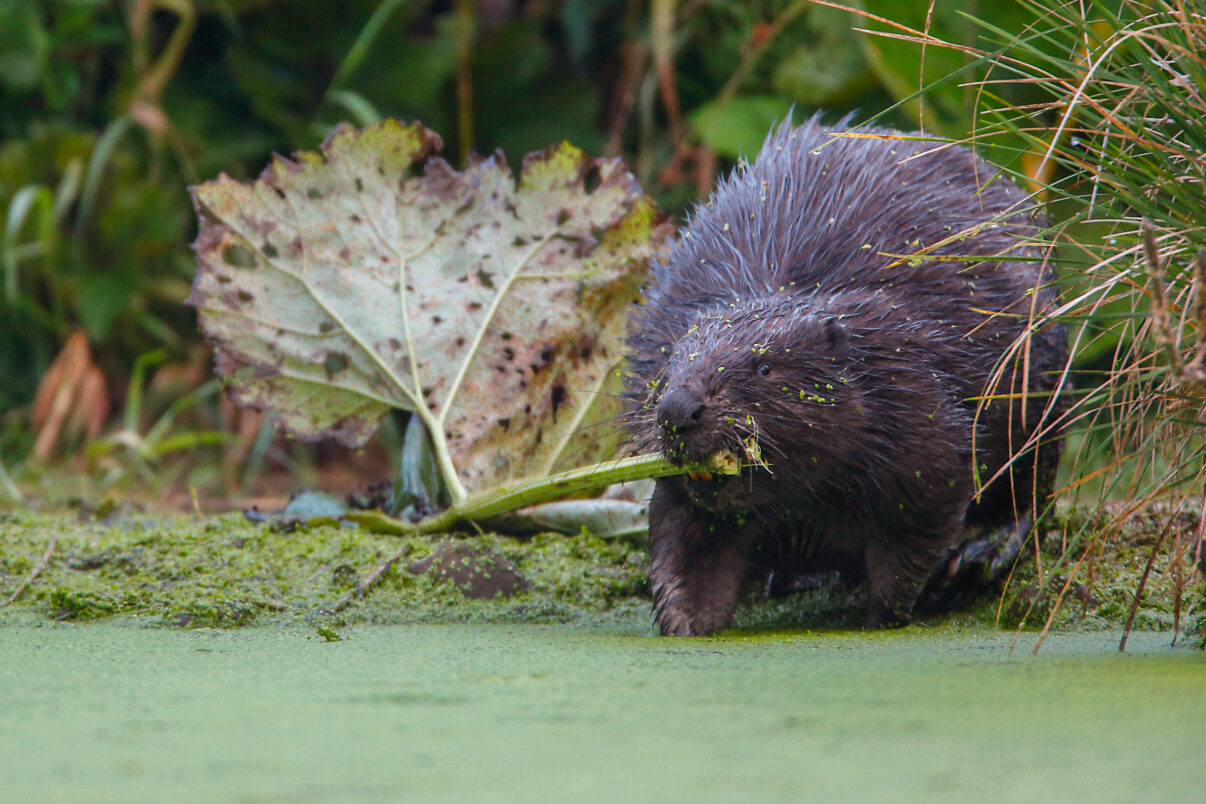
The rise of beavers in Italy
Gnawed trunks, dams and downed trees: the presence of beavers in the landscape is unmistakable. The combination of these signs of presence – together with images obtained from camera traps and genetic analyses of fur samples – confirm that the beaver now lives in different parts of Italy: the north-east, in Friuli-Venezia Giulia and Alto Adige, near the Austrian border; the center of the peninsula in Tuscany, Umbria and Abruzzo; and in the southern regions of Molise and Campania.
This fragmentation suggests that, while beavers have naturally crossed the border from Austria following official reintroductions, unofficial releases have taken place in central and southern Italy. The International Union for the Conservation of Nature (IUCN) strongly discourages reintroductions carried out without feasibility studies and the genetic analysis of released individuals, because of the damage they may cause to native ecosystems. For this reason it has developed clear guidelines for reintroductions, to which Rewilding Europe and partner organisations always adhere.
“The natural return of a wildlife species to parts of its former range is always a reason to celebrate,” says Rewilding Apennines team leader Mario Cipollone. “This proves that nature is resilient and will bounce back if we let it. When reintroducing a species, however, it is essential that the ecological, social, and cultural conditions of the landscape are evaluated first. If the factors that led to the disappearance of the species in the first place are still present, it will simply disappear again.”
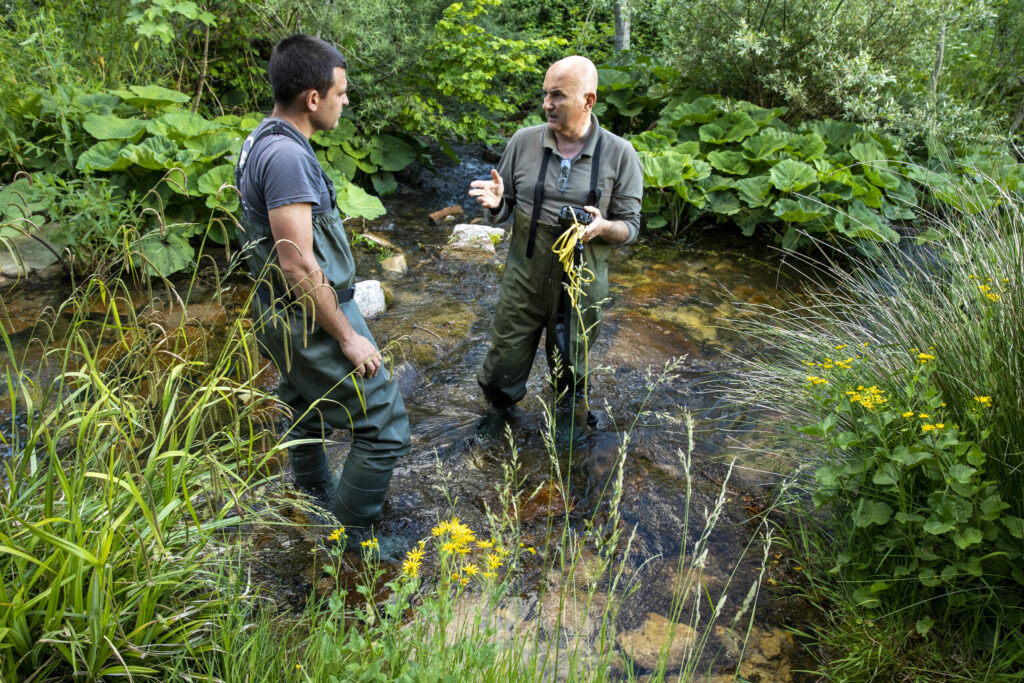
Beaver numbers Europe
The Eurasian beaver is a large rodent that is native right across Europe. These charismatic animals are renowned ecosystem engineers, capable of transforming landscapes, enhancing biodiversity, and improving the health and functionality of the water bodies they inhabit.
Humans have always been interested in beavers as a source of meat and fur, as well as castoreum – an oil produced by the animal’s anal glands. This renders the fur of the beaver waterproof and has long been prized in the cosmetics industry. Overhunting saw beaver populations decline significantly in Europe after the Middle Ages and by the 1600s it was considered extinct in some countries, including Italy.
Since the early part of the twentieth century many European beaver populations have started to recover, thanks to legal protection and successful reintroductions. Currently there are around 1.2 million beavers in Europe, according to Rewilding Europe’s European Wildlife Comeback report (2022).

Multiple benefits
Today, it is estimated that there are about 60 beavers in Italy. Eradication of the species was the first management option considered when the suspicion of unauthorised reintroductions was confirmed. But before the permanent removal of beavers is even considered, we must take the ecological benefits of the species into account. As beavers modify the landscape in which they live to meet their ecological needs they provide myriad benefits for nature and people.
The Eurasian beaver is a herbivore that thrives near water bodies. By foraging on adult trees, beavers increase light in the lower levels of the canopy, reducing competition, and promoting the growth of herbaceous plants and young trees.
Beaver dams reduce water flow and even out water levels in rivers, which in turn reduces erosion potential and the possibility of flooding. They also expand riparian habitat and recharge groundwater by raising the water table. Each individual dam traps sediments and organic material, creating small riparian areas rich in nutrients, which foster microbial activity and the growth of aquatic plants. Dams can also trap pollutants, increasing water quality downstream.
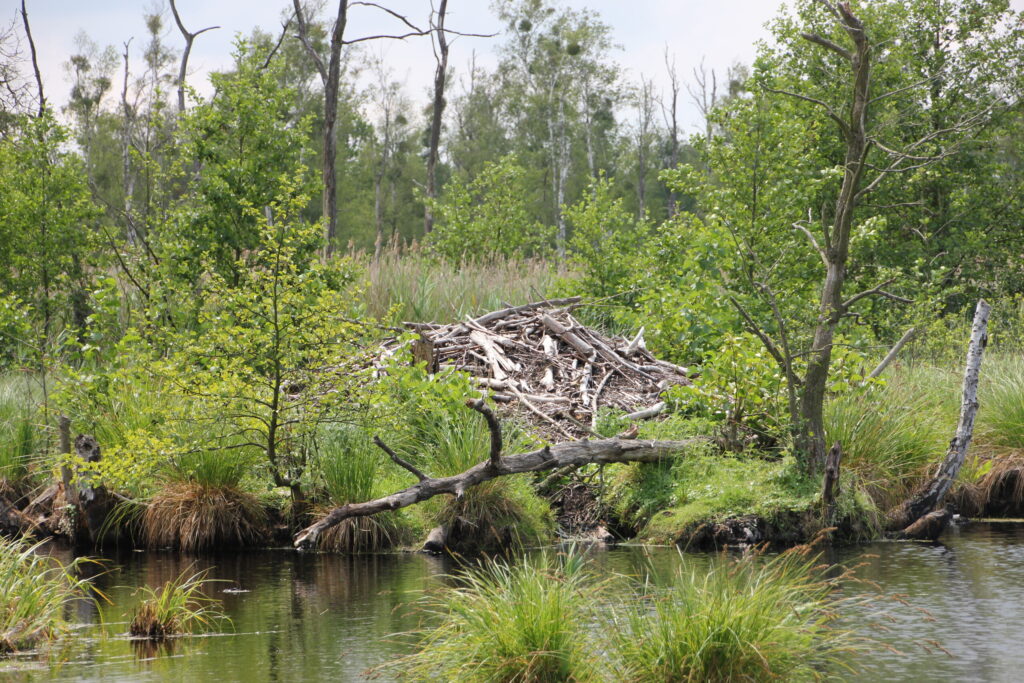
The area surrounding a beaver dam, with its slow-flowing water and lush vegetation, is very rich in microfauna, such as invertebrates, providing food for many other species. Fish, amphibians, reptiles, bats and birds find plenty of food and the ideal conditions to reproduce. Large and small herbivores, such as hares, roe deer and red deer, feed on young plants in the growing season and on the bark of fallen trees in winter.
Fallen trees also provide a perfect place for small mammals to nest and eventually lead to the regeneration of soil and organic matter. The presence of amphibians, reptiles and small mammals attracts otters, which often share rivers with beavers. In short, beaver activity has a hugely beneficial impact on biodiversity and water resources.
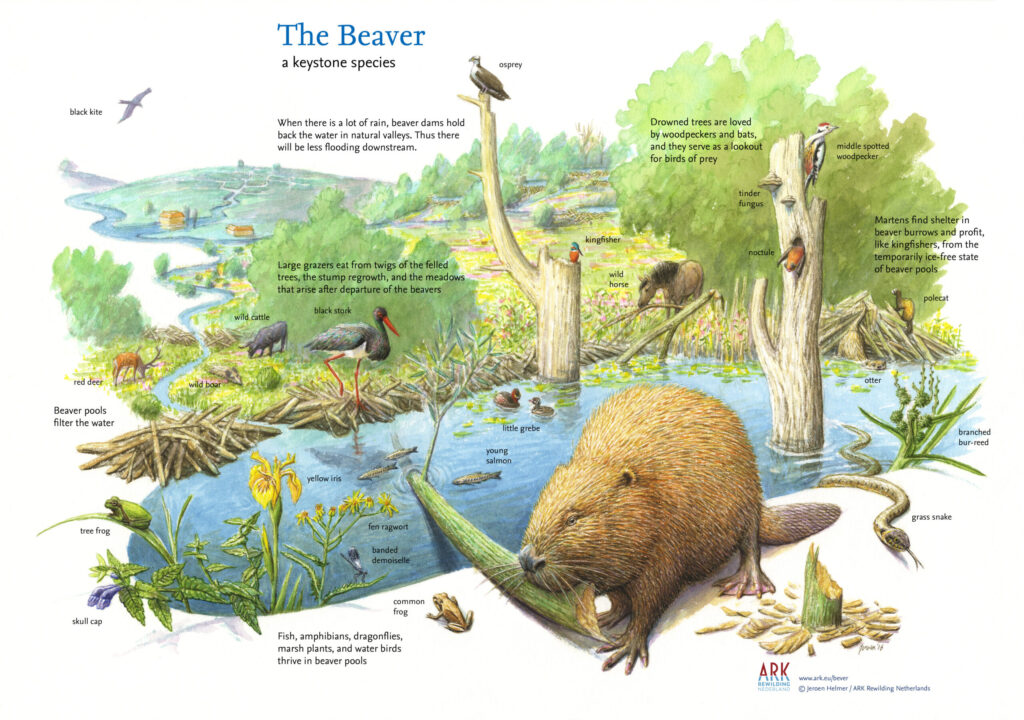
Human-beaver coexistence
The number of beavers in Italy is still too low to cause significant changes in the landscape. But as populations are growing, it is important to consider how people can live alongside this ecologically important species.
When people think about human-wildlife interaction, they often express their concerns regarding possible crop damage. Beavers can feed on crops, but the losses that arise for farmers are minimal. A more significant impact relates to the debarking and felling of fruit trees and trees with economic value.
Beaver dams have the potential to flood forests, agricultural fields, roads and basements. Rising groundwater levels can block drainage pipes, increase bank erosion, and destabilise railroad tracks. Beaver tunnels can also compromise the integrity of dykes.
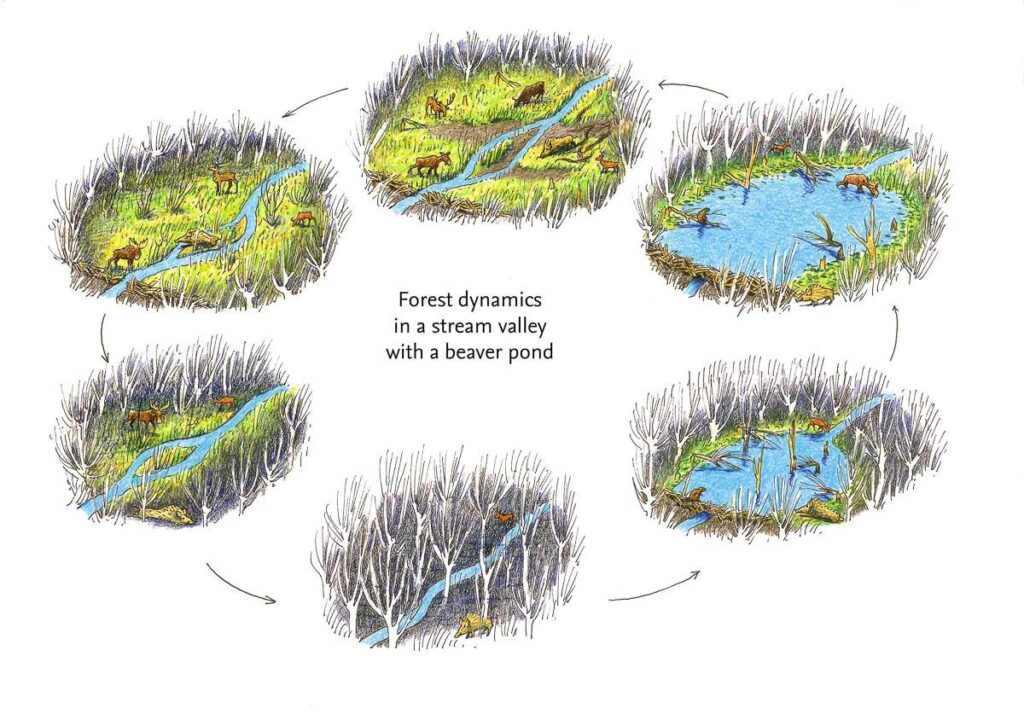
A sustainable solution to human-beaver coexistence challenges would be to end human disturbance in areas that beavers occupy – usually a 20-metre strip of land that runs alongside water bodies. These areas are not only highly valuable for beavers and many other wildlife species, but also for people: they act as a buffer for drainage from agricultural land and provide protection from flooding.
Other strategies can also be employed. In countries such as Germany, the Netherlands, Latvia, and Scotland, common mitigation measures include wire mesh, the application of anti-game paint to tree trunks, and economic compensation. Gratings, sheet-pile walls and gravel layers are used to prevent the undermining of dams and roads; electric fences keep beavers out of selected areas, and culverts passing through beaver dams can lower the impact of flooding.
Beaver populations can also be closely monitored in order to avoid critical conflict situations: beavers identified as potentially problematic can be relocated and dangerous dams lowered or removed.
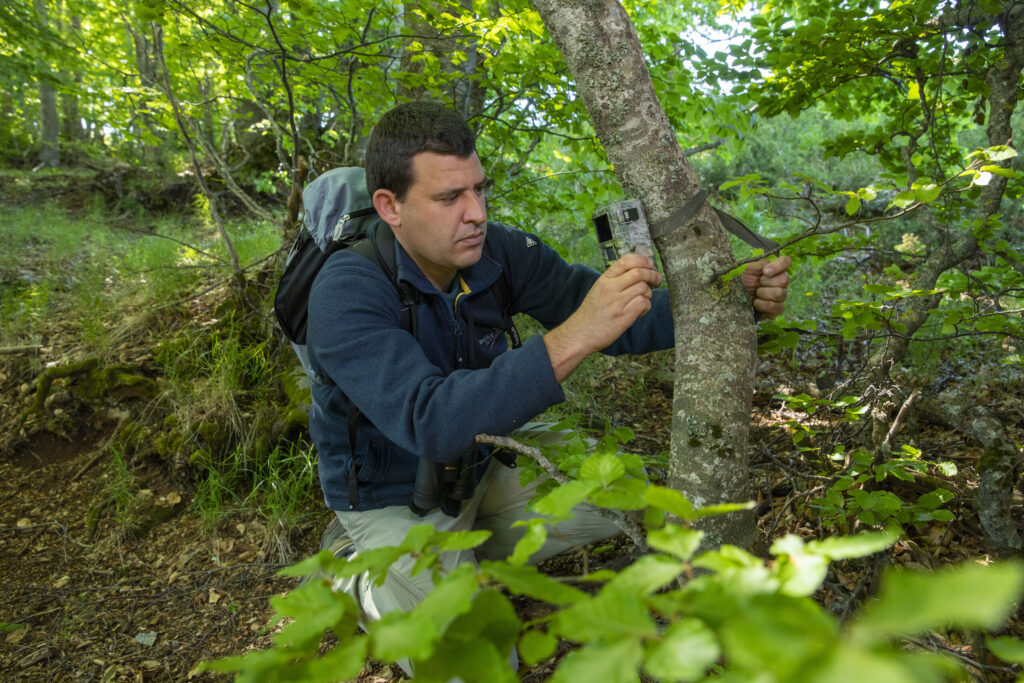
Benefitting people
When it comes to promoting human-wildlife coexistence, engaging and inspiring people in local communities is essential to the success of any reintroduction. It is important to make people aware of how beavers can be a great asset for such communities, supporting the development of nature-based tourism and providing a unique array of other benefits.
Coexistence between beavers and humans requires approaches that take the needs of both into consideration. Living alongside beavers is not only possible but desirable, with the positive changes this iconic and ecologically important species bringing to the environment benefitting both nature and people – both in Italy and further afield.
